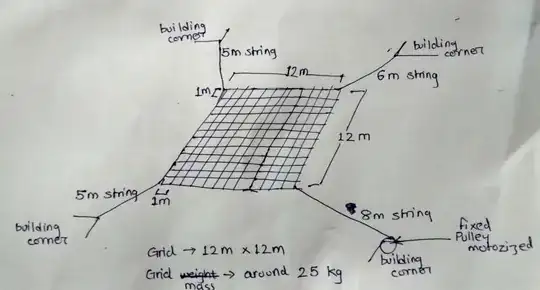I am a software developer and helping someone with an art installation. It consists of a grid made of ropes.
Grid is $12 \cdot 12$ meter and internal squares are $1 \cdot 1$ meter. Grid is suspended in air (at height of around 7 meter) by strings tied to each one of its four corners.
Three of the four strings are around 5 meter, 5 meter and 6 meter in length, but the fourth one is around 8 meter. I can measure the distances (in $x$ and $y$ components) from each of the corners to the point (on building/ structure) where they are tied. This would help in calculating theta angle, right?
I have searched over the web and found resources to calculate tension in strings. But all of them show how to calculate tension for an object suspended by two strings at a common point.
I need to calculate tension exerted by strings tied at different points of object (each one of four corners.)
Please correct me anywhere I am going wrong. Also, any pointers would be appreciated.
EDIT : One of the corners, the one tied with 8 meter long string would be tied to a motorized pulley for winding/unwinding.
